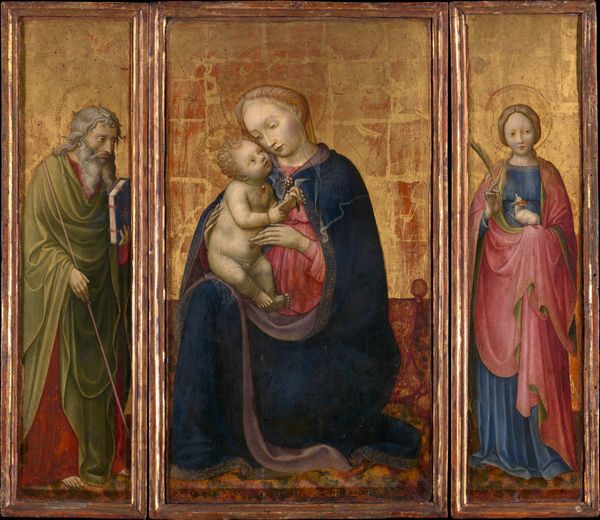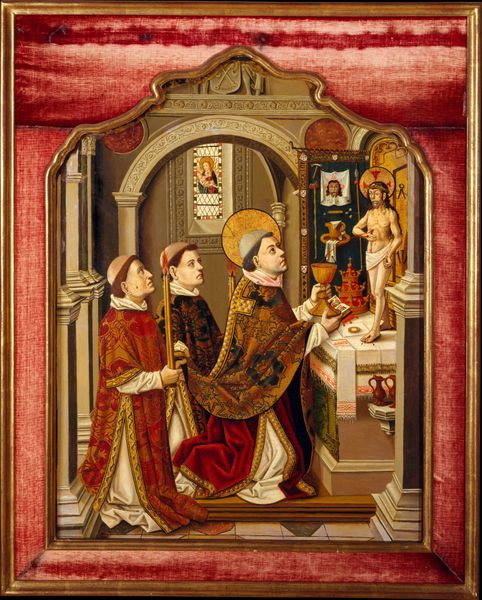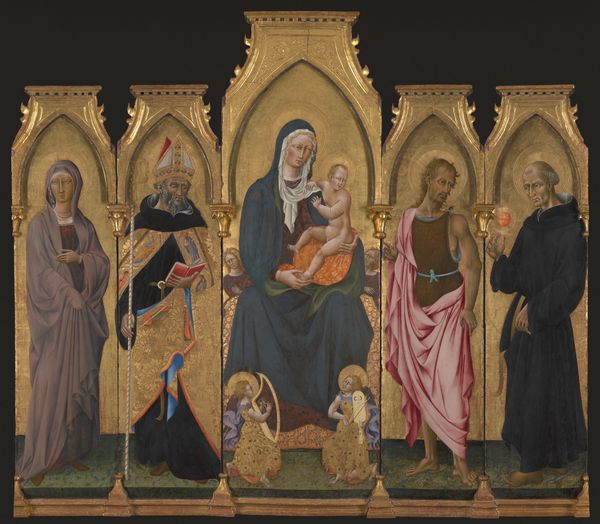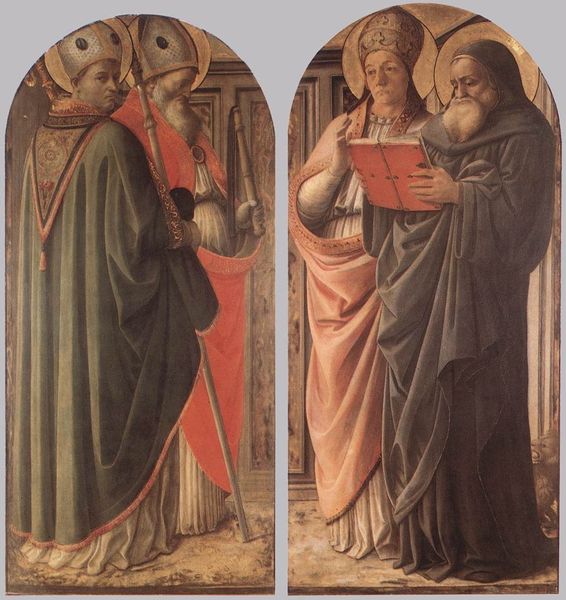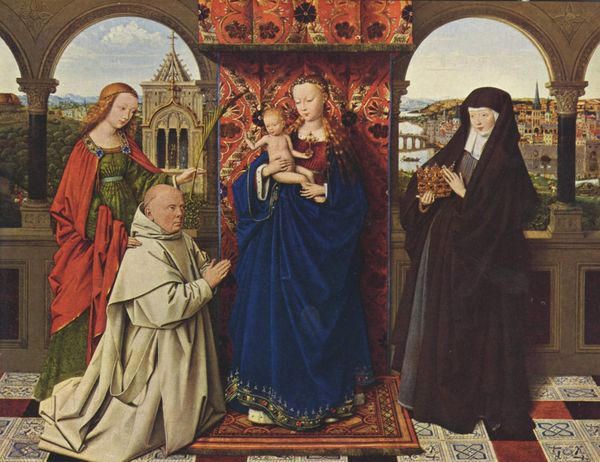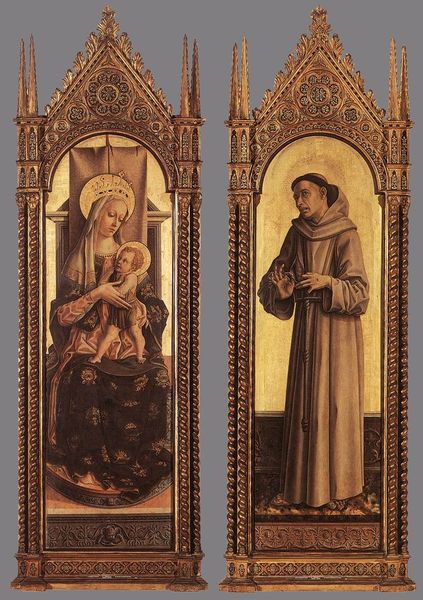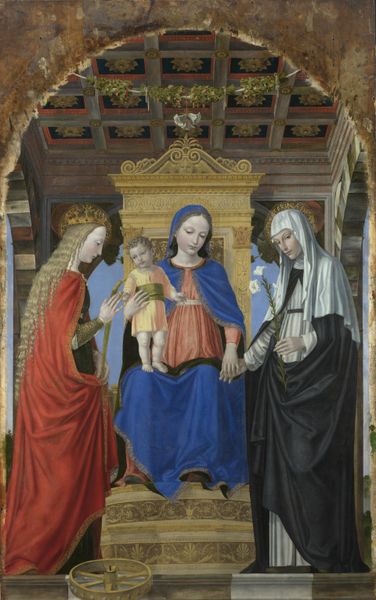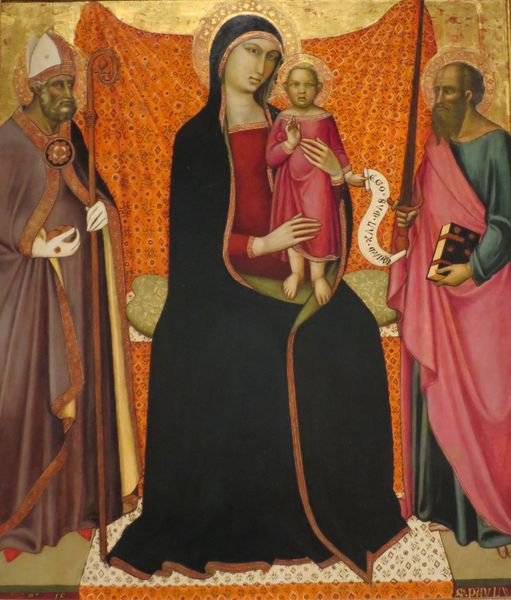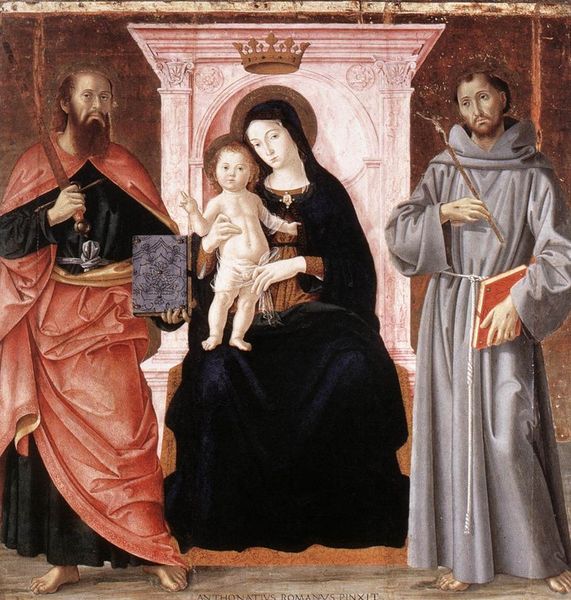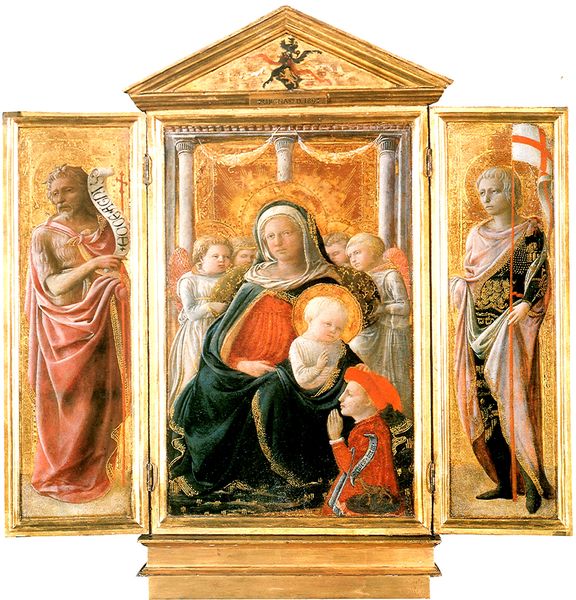
tempera, painting
#
portrait
#
tempera
#
painting
#
figuration
#
history-painting
#
italian-renaissance
#
early-renaissance
Copyright: Public domain
Editor: We're looking at "Madonna and Child Between Saints Francis and Anthony," a tempera painting from 1467 by Antoniazzo Romano. It strikes me as quite formal, almost rigid, in its composition, yet there's something so tender about the way Mary holds the child. What catches your eye, or how do you read this triptych? Curator: The formality you sensed is so interesting! I think of it as a window into the period - the Early Renaissance reaching for a new kind of grace while still tethered to the conventions of devotional art. And isn't the gold leaf just wonderful? It reminds me of sunlight streaming through stained glass. Consider also the symmetry; do you think it adds or detracts from the emotional impact? Editor: I can see how that gilded backdrop gives the piece a radiant effect, very much fitting a sacred subject. The symmetry definitely gives it a serene feel, a structured sort of calm. Still, I wonder, does it perhaps limit the expression of individuality of the figures, in a way? Curator: An astute point. Early Renaissance painters walked this fascinating tightrope: wanting to depict individual features but constrained by tradition and symbolism. Saint Francis and Anthony each carry their identifying symbols - the crucifix, the book, the flame of divine love. I almost see Romano trying to push against that frame. I see real expression in their faces. It's like, if the saints suddenly got chatty, what stories would they share? Editor: That's a wonderful way to put it. Seeing their individuality within the formality makes it more personal, more alive, even. Thank you! Curator: It makes me consider: are *we* seeing this art, or are *they* seeing *us*? The exchange itself is transformative.
Comments
No comments
Be the first to comment and join the conversation on the ultimate creative platform.
